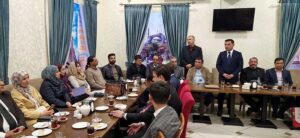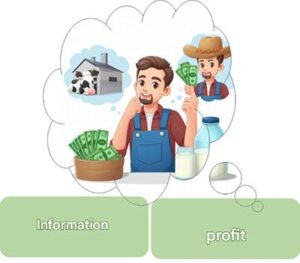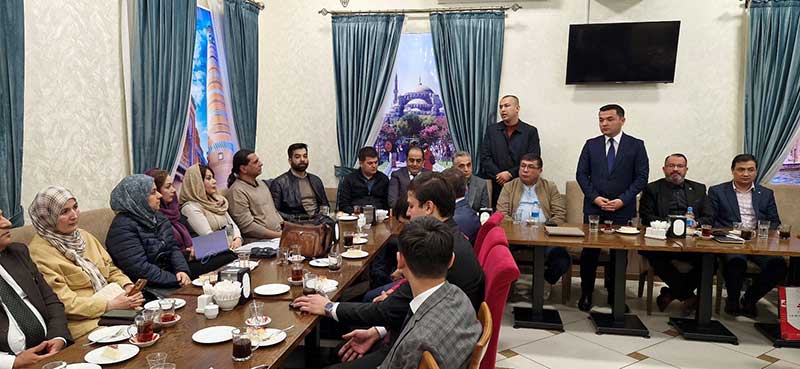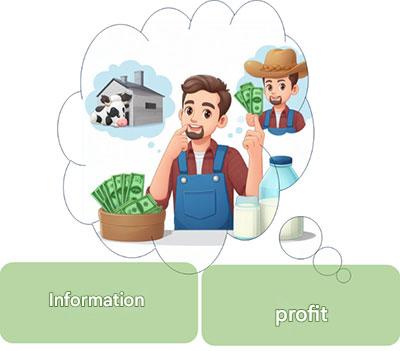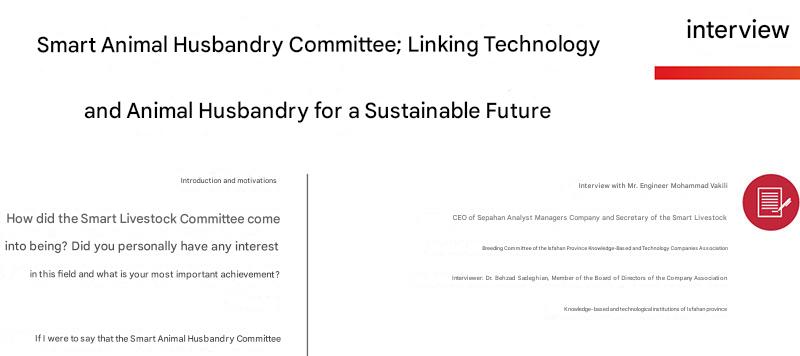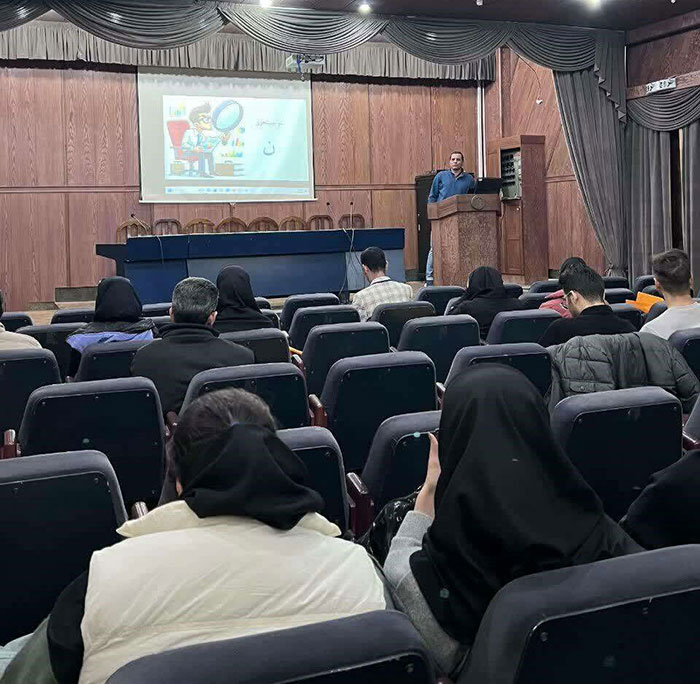Introduction to the Necessity of Smart Livestock Farming in Iran
The livestock industry in Iran faces numerous challenges, including increasing demand for animal products, the need to reduce costs, and improve productivity. Traditional farming methods alone are no longer sufficient to meet the growing demands of society.
Smart livestock farming, by leveraging new technologies (such as the Internet of Things and Artificial Intelligence), offers an effective solution to improve production processes, reduce costs, and increase productivity. For example, by attaching wearable sensors to livestock, all their behaviors can be monitored and analyzed 24/7, leading to automatic and early detection of diseases.
The intelligentization of livestock farming is not merely limited to improving animal health and management; it also brings tangible economic benefits. The use of smart technologies reduces the need for human labor, increases the efficiency of milk and meat production, and ultimately leads to greater profitability for livestock farms.
In the current competitive environment, livestock farmers who move towards smart farming will be able to play a more prominent role in the future market by reducing superfluous costs and improving product quality. Conversely, livestock units that disregard this transformation may lose their competitive edge in the long run. In summary, smart livestock farming is a strategic necessity for the sustainability and development of this industry in Iran.
Classification of Smart Livestock Farming Equipment and Software
Smart technologies in the livestock industry encompass a wide range of hardware equipment and specialized software. The most important classifications of these tools and systems are introduced below:
- Equipment:
- Animal Identification: Tools such as RFID ear tags and smart collars that give each animal a digital ID. These devices enable automatic tracking and identification of livestock.
- Herd Management Systems: A collection of software for recording and analyzing animal information. These farm management software solutions provide integrated planning for feeding, vaccination schedules, and reproductive data recording. For instance, Modiran Company’s web-based herd management software is an example of such a system, providing cloud-based herd data to the farmer.
- Smart Livestock Weighing: Smart scales and weighing equipment that digitally measure and record animal weight. These devices are connected to the management system and monitor changes in each animal’s weight over time.
- Sensors and Environmental Monitoring: Includes cameras, temperature, humidity, and barn gas sensors that control the environmental conditions of the livestock farm. These sensors provide data on ventilation, optimal temperature, ammonia levels, etc., to ensure animal comfort. For example, smart ventilation fans, with the help of gas and temperature sensors, can automatically keep the barn air fresh.
- Automated Feeding and Watering Equipment: Devices such as automatic feeders, forage distribution robots, and smart waterers that manage animal feeding according to a set schedule.
- Financial Analysis and Management Software: Specialized software for calculating the cost price of animal products, managing expenses, and the profitability of the livestock unit. These systems calculate all costs of feed, medicine, labor, etc., alongside income from product sales, providing management reports. For example, the animal cost price software shows the farmer the cost per liter of milk or per kilogram of weight gain, and which areas need productivity improvement.
- Other Smart Equipment and Systems: Other examples include smart CCTV cameras for visual monitoring of livestock, automatic estrus detection systems (detecting estrus in animals by analyzing their behavior and movement), and automatic milking machines with the ability to measure milk volume per animal for remote monitoring. Together, these tools form a smart farming ecosystem that collects data and information from the herd level.
Considering the above, the intelligentization of livestock farming involves two fundamental aspects: 1) the use of physical smart equipment on the farm, and 2) the utilization of software systems for data management and optimal decision-making.
Survey Results: The Extent of Smart Livestock Farming Technology Adoption in Iran
To assess the current state of smart livestock farming in the country, Modiran Tahlilgar Sepahan Company conducted a survey among experts and managers of livestock farms.
Approximately ۴۰% of respondents owned cattle farms. In contrast, about ۱۷% of participants stated that their primary livestock was sheep. This relatively lower figure may be due to the fewer number of large industrial sheep farms compared to cattle farms in the country.
According to the results, about ۶۱% of the applying units were considered small livestock farms. In contrast, only ۱۱% of participants belonged to medium-sized farms, and about ۲۸% of the surveyed farms were large (industrial).
Preferences of Livestock Farmers in Purchase Methods and Investment for Smart Equipment
One of the key questions in this survey was the preferred method for livestock farmers to purchase smart equipment and software. The results indicate that financial concerns and the high costs of these technologies directly influenced managers’ decision-making.
As the chart above shows, approximately ۷۸% of respondents prefer to purchase these technologies on long-term installments. This significant figure indicates that most livestock farmers require long-term payment conditions and credit loans for investing in new technologies. About ۱۱% of farmers preferred the short-term installment option, suggesting a smaller group with faster repayment capacity or better working capital. Only ۱۱% of participants stated they were willing to make a cash purchase (one-time payment) of smart equipment.
Overall, the results of this section suggest that the high initial cost of smart equipment is a significant barrier to the widespread adoption of smart livestock farming, and without financial support and facilities, farmers find it difficult to acquire these technologies.
In addition to the above, the questionnaire included questions about the types of equipment and software used or desired by livestock farmers. Analysis of the responses showed that many farmers expressed a desire to first use software-based herd management and data recording systems to have better data for decision-making.
Furthermore, equipment such as smart scales, surveillance cameras, and automated feeding systems were among the next most popular choices. This prioritization indicates that farmers are primarily drawn to technologies with clear return on investment (ROI) (such as information management for reducing losses and improving production).
Conclusion and Executive Recommendations for the Development of Smart Livestock Farming
The conducted study indicates that although smart livestock farming has been recognized as a necessity in Iran’s livestock industry, its practical implementation requires precise planning and comprehensive cooperation. On one hand, farmers are aware of the importance and benefits of new technologies and express their willingness to utilize smart systems. On the other hand, financial and structural constraints pose a serious obstacle to the rapid expansion of these technologies.
Under these circumstances, several actions are proposed for the development of smart livestock farming in the country:
- Education and Promotion: Organizing training courses and practical workshops for farmers on smart technologies is crucial. Direct familiarity with how equipment works can alleviate concerns and ambiguities. Promoting success stories from farms that have achieved remarkable results through intelligentization will help encourage others.
- Financial and Subsidized Support: As the results showed, most farmers are unwilling to purchase technology without long-term installment facilities. Therefore, offering low-interest loans, creating special credit lines for purchasing smart livestock equipment, and even government subsidies for strategic technologies (such as livestock health monitoring systems) should be on the agenda. This support can be provided through the Ministry of Agriculture Jihad, technology development funds, or agricultural sector banks.
- Localization and Reduction of Production Costs: Domestic knowledge-based companies should be encouraged to produce smart livestock equipment relying on indigenous technology. The less reliance on imported hardware and software, the lower the final cost, making the selling price more affordable for Iranian farmers. Furthermore, technical support and after-sales services will improve with domestic production, increasing farmers’ trust in using these technologies.
- Designing Solutions Suitable for Different Scales: A single approach may not be effective for all farm sizes. It is proposed that technology packages be defined at three levels for small, medium, and large farms. For example, a package for a small farm might include a few basic sensors, a portable smart scale, and an affordable cloud-based software subscription. In contrast, a package for a large farm would include more advanced equipment such as comprehensive automation systems. This adaptability ensures that every farmer, regardless of scale, feels they are receiving a solution tailored to their needs.
- Development of Communication Infrastructure in Rural Areas: Many smart livestock farming technologies rely on the internet and networks. Providing high-speed internet in remote areas and livestock farm locations is a crucial prerequisite. The Ministry of Communications can prepare the necessary infrastructure for connecting IoT livestock equipment by expanding broadband coverage and the national information network in rural areas.
In conclusion, smart livestock farming can be considered the next step in the transformation of the country’s livestock industry, moving from rhetoric to action. The analysis of the survey data shows that initial determination and interest exist among farmers, but to turn this enthusiasm into widespread movement, appropriate conditions must be provided. With education, financial support, and the provision of indigenous solutions, it is expected that in the coming years, we will witness significant growth in the application of technology in Iranian livestock farms. The result of such a transformation is not only increased profitability for livestock units but also the enhancement of national food security, improved quality of animal products, and competitiveness in global markets. By embarking on the path of intelligentization, Iran’s livestock industry will forge a more sustainable and prosperous future for itself.




